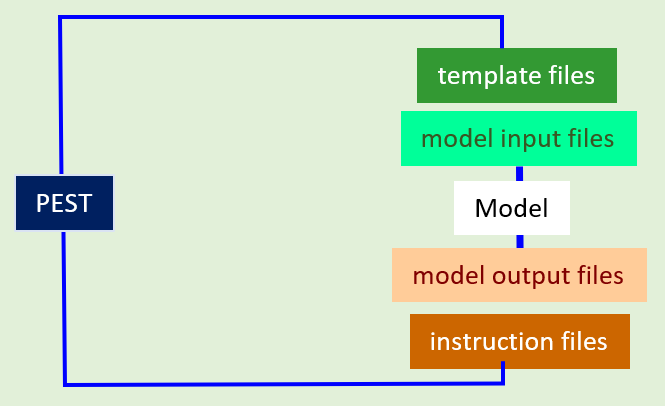"PEST" refers to a suite of software that is an essential complement to numerical simulation when undertaken to serve the decision-support imperatives of:
- quantifying the uncertainties of decision-critical predictions; and
- reducing these uncertainties as much as available data allows.
First there was PEST. PEST stands for "Parameter ESTimation". The original version of PEST estimated parameters for well-posed inverse problems. At the time, it was unique, for it could interact with the model which it was calibrating through the model's own input and output files. This original version of PEST was supported by a small number of utility programs. Mostly these conducted error-checking and basic PEST setup tasks.

Over time, programs comprising PEST's utility support suite grew in number. There are now over 170 of these programs. Error checking and assistance in PEST setup are still important roles that these programs play. However programs of this suite play many other roles as well, These include linear error and uncertainty analysis, random parameter set generation, automatic setup for data and ensemble space inversion. You receive all of these utilities when you download PEST.
Another suite of utility software, specially designed to expedite the use of PEST in calibration and uncertainty analysis of groundwater models such as those of the MODFLOW suite, was also developed. These are known as the "PEST Groundwater Utilities", or sometimes by their older name as the "PEST Groundwater Data Utilities". Some of the tasks performed by these programs have nothing to do with parameter estimation; they simply write input files for groundwater models, or extract data from groundwater model ASCII and binary output files.
Three groundwater modelling support programs do not belong to this suite, because they are large enough, and unique enough, to exist on their own. They are:
- PLPROC: used for complex pilot point parameterization of groundwater models, including unstructured grid models such as MODFLOW-USG and MODFLOW 6.
- OLPROC: used for postprocessing of model results in order to match them with field measurements, and for automatic creation of PEST input datasets involving complex, multi-component objective functions.
- TS6PROC: used for parameter-based processing of MODFLOW 6 input time series.

The PEST Surface Water Utilities expedite the use of PEST in calibration and uncertainty analysis of surface water and land use models. Their design is based on the premise that this requires formulation of a multi-component objective function that targets different aspects of measured time series for extraction of parameter-pertinent information.
Meanwhile, as these utility suites were being developed, PEST itself was being developed. Its capabilities moved well beyond regression and solution of well-posed inverse problems. Methodologies were introduced for performing highly-parameterized inversion and uncertainty analysis, this being essential for history-matching of groundwater and geothermal reservoir models where data is scarce, uncertainties are high, and processes are complex. Parallelization of model runs was introduced with Parallel PEST and BEOPEST.
The latest version of PEST is named PEST_HP. "HP stands for "high performance" or "highly parallelized" - you can choose. Its inversion algorithm is optimized for use in parallel computing environments. Programs that comprise the HP-suite can undertake global optimization, realization space inversion and data space inversion.
All of this software is:
- comprehensively documented, and
- free.
It can be downloaded from these pages.
